Imagine this: you’re a sheep farmer…
…taking a much-needed break to watch a rugby match on television with your family. Somebody knocks on the door, says they’re looking to use your farm for a film set. What do you do?
Tell them to go away, of course. Rugby’s on.
The filmmakers are persistent, and at some point it becomes clear that this is Peter Jackson, who’s been flying around in a helicopter looking for the perfect setting to film the Lord of the Rings trilogy—and your farm is it.
While the Shire is a figment of Tolkien’s imagination, the place has to be real. There can be no power lines, freeways, or radio towers off in the distance. The landscape has to be as bucolic as the English countryside, with rolling hills, gentle rivers, and stately trees. None of this will be faked with special effects or computer animation.
After some negotiation, work starts on the hobbit homes and landscaping and stone paths. A road has to be built to accommodate the construction and filming equipment. An oak tree is transplanted from another location to complete the scene. A pond is dug. It’s real, but temporary: the deal stipulates that everything will be returned to its original state after the three-month shoot is over.
In other words, the sheep farmer says to Peter Jackson: Go away when you’re finished, and make it look like you were never here at all.
At this point in the story, it seems like the sheep farmer has every intention of just getting back to sheep farming when this madness is all over.
And that almost works. But the weather turns foul before the crew can finish demolishing the hobbit homes. 18 of them are left, all of them meant to be temporary set pieces, made out of plywood and Styrofoam.
So there you are, a farmer with a half-demolished film set on your hands. People start showing up, wanting to have a look. You oblige. As the films are released, interest grows. Pretty soon you have 12,000 people a year showing up for a tour. And you still have 13,000 sheep to manage!
What happens when Jackson returns to talk about filming the Hobbit trilogy there? Well, now something has changed. People are interested—not just in the film, but in the farm. They want to see the place where people came together to make the thing. The farmer has become a part of the Lord of the Rings story. Now Hobbiton matters, in a different way. Not because of Peter Jackson, but because of the fans who kept showing up.
So the farmer strikes a new deal. This time, the set will be built to be permanent. He and Jackson will form a company together. The sheep farm will become something else. It will still be a sheep farm, but it will also be a proper tourist destination.
It takes a year to build the set. They let the weeds grow just so, to make the place seem lived in. It’s someone’s job to walk on the grass between the clotheslines, so the path looks well-worn. The pond has been colonized by frogs that interfere with the filming, so it’s someone else’s job to carefully relocate them.
And the tree? The original oak didn’t survive. A fake one is brought in, along with 376,000 painted leaves. But the fake one looks fake. Jackson has every leaf re-painted to more closely resemble a real oak tree. Every detail matters.
Even the sheep have to be exactly right. The 13,000 sheep already living on the farm are the wrong kind, so none of them are destined to become stars. Peter Jackson wants Suffolk sheep, with black faces, not the white New Zealand sheep, so he had them brought in.
And now over half a million people line up every year to see the place, and hear about the hand-painted leaves, and poke their noses inside the hobbit homes. Half a million people, visiting a sheep farm!
I think about that farmer sometimes, and how opportunity knocked at his door in the form of Peter Jackson and the ghost of JRR Tolkien, and how he told them to go away.
Can you blame him? Is it any sheep farmer’s dream to run a film set, much less a tourist attraction?
But then he found out that he had an audience. They showed up, and told him what they wanted. He found a way to build that for them. Is that so different from farming, really? A farmer has to grow the thing that people want to buy: mutton, wool, barley, strawberries, whatever it might be. The farmer is in the business of providing what he can, on the land he has, for the people who want it.
I’m guessing that running a film set was never his dream, but then it showed up, and became his life.
How do any of us know what we want, anyway, until it shows up?
I wonder what sheep farmers do dream about
Do they find it restful to count sheep in their beds at night, or does it keep them awake and wary?
And where did the idea of counting sheep come from? There’s a reference to counting goats in Don Quixote, back in 1605, that vaguely alludes to falling asleep, but is that it?
A lady social scientist, Harriet Martineau, wrote a nine-volume set of stories to explain the economic theories of Adam Smith and to describe, for ordinary people, how the free market operates. In volume 7, published in 1834, she briefly mentions that the passage of sheep “served to send the landowner to sleep more than once, when occurring at the end of the train of anxious thoughts which had kept him awake,” but that was hardly the point of the story. (Martineau’s books, by the way, outsold Dickens during her lifetime. We will definitely be revisiting Martineau in a future installment.)
I found an earlier mention, from Wordsworth, back in 1815. Did he invent the idea? If he did, he found it useless.
Maybe sheep farmers fall asleep by counting hobbits now. Maybe they dream of Peter Jackson, not sheep, leisurely passing by.
Draw Hobbiton with us!
Thumbnail sketches are a great way to get some drawing in when you’re traveling with a group and don’t have time to sit for an hour and get all your art supplies out. You can quickly capture the day with little drawings that only take a few minutes each. Color them on the ride home. Make notes around the edges when you stop for lunch. This is a very “on the go” sketching practice, and it’s ideal for beginners who might get overwhelmed with a big, complicated drawing.
Want to give it a try? For only five bucks a month, I’m sending out video art lessons, tutorials, art supply reviews—and you get access to the growing archive as well. Plus, you support this little enterprise, and having dozens, if not hundreds, of you showing up every week for this thing is almost as exciting for me as half a million Hobbiton visitors must be for that sheep farmer.
The Bit at the End
Come find me on Instagram, or see paintings for sale- Right here
Order signed copies of some of my books from my husband’s bookstore, or order my books and many books I love at Bookshop.org
Take one of my online writing or art classes here
Post your comments using the link below—I love to hear from you! And feel free to share this newsletter. Much appreciated.




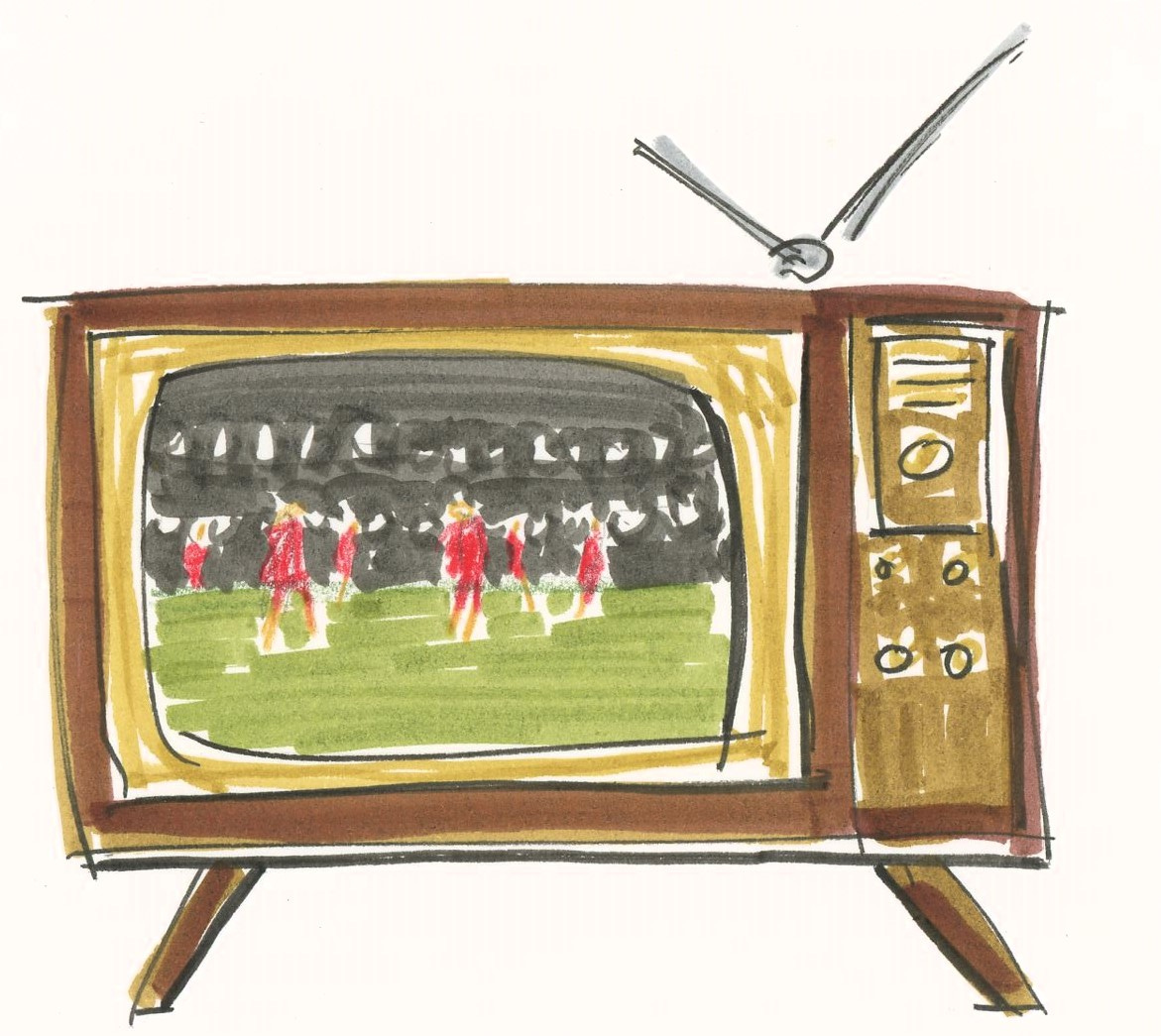
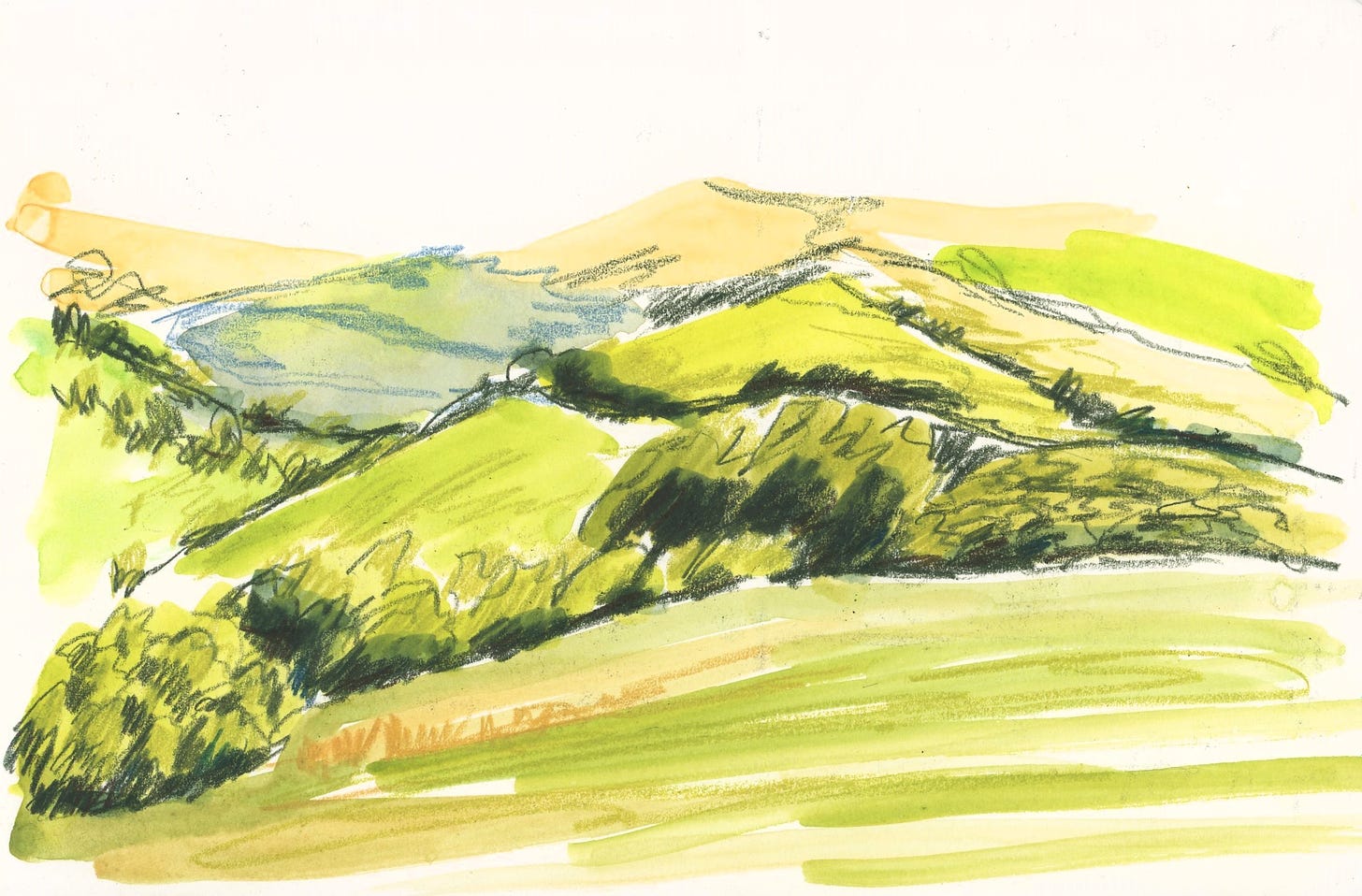
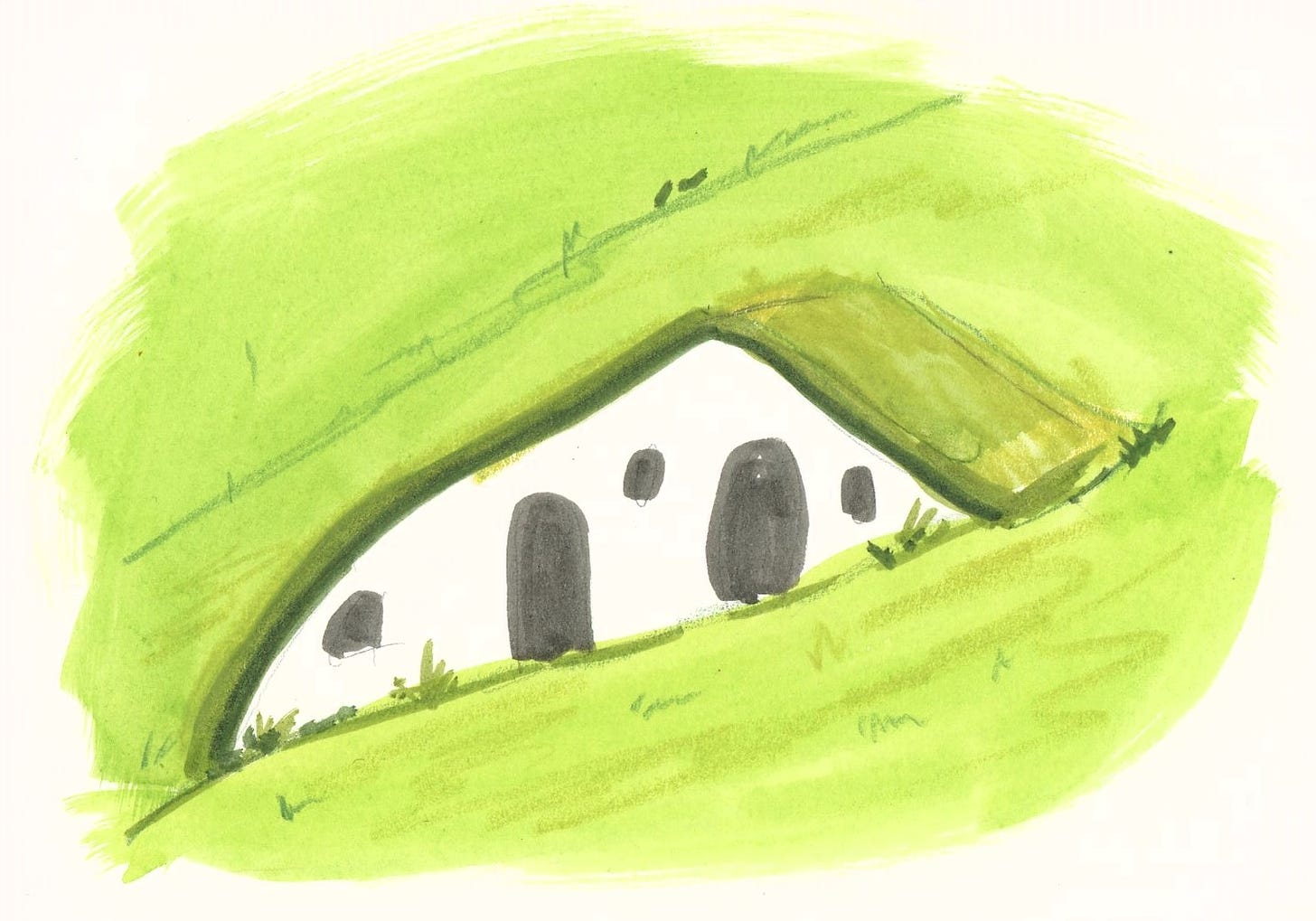
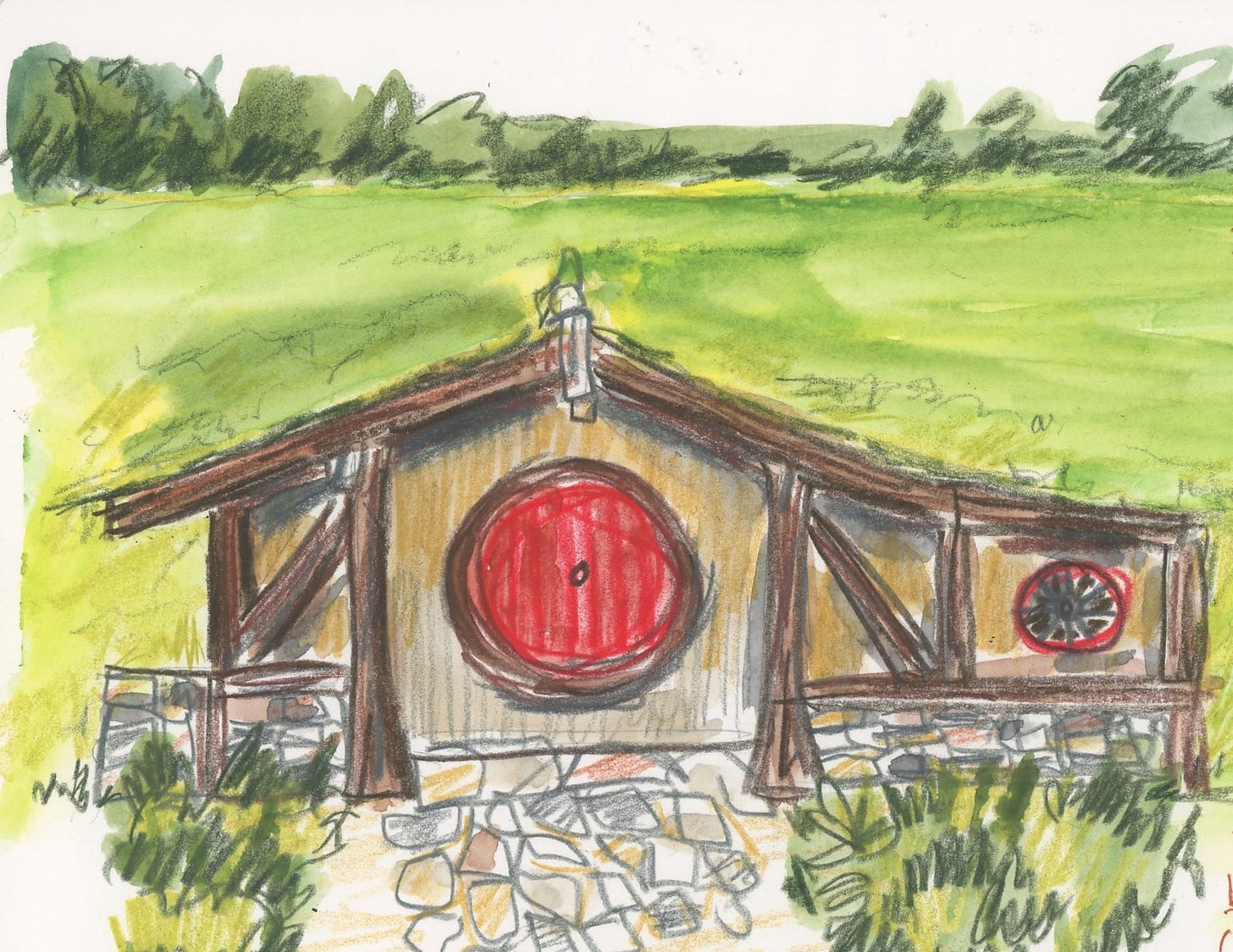
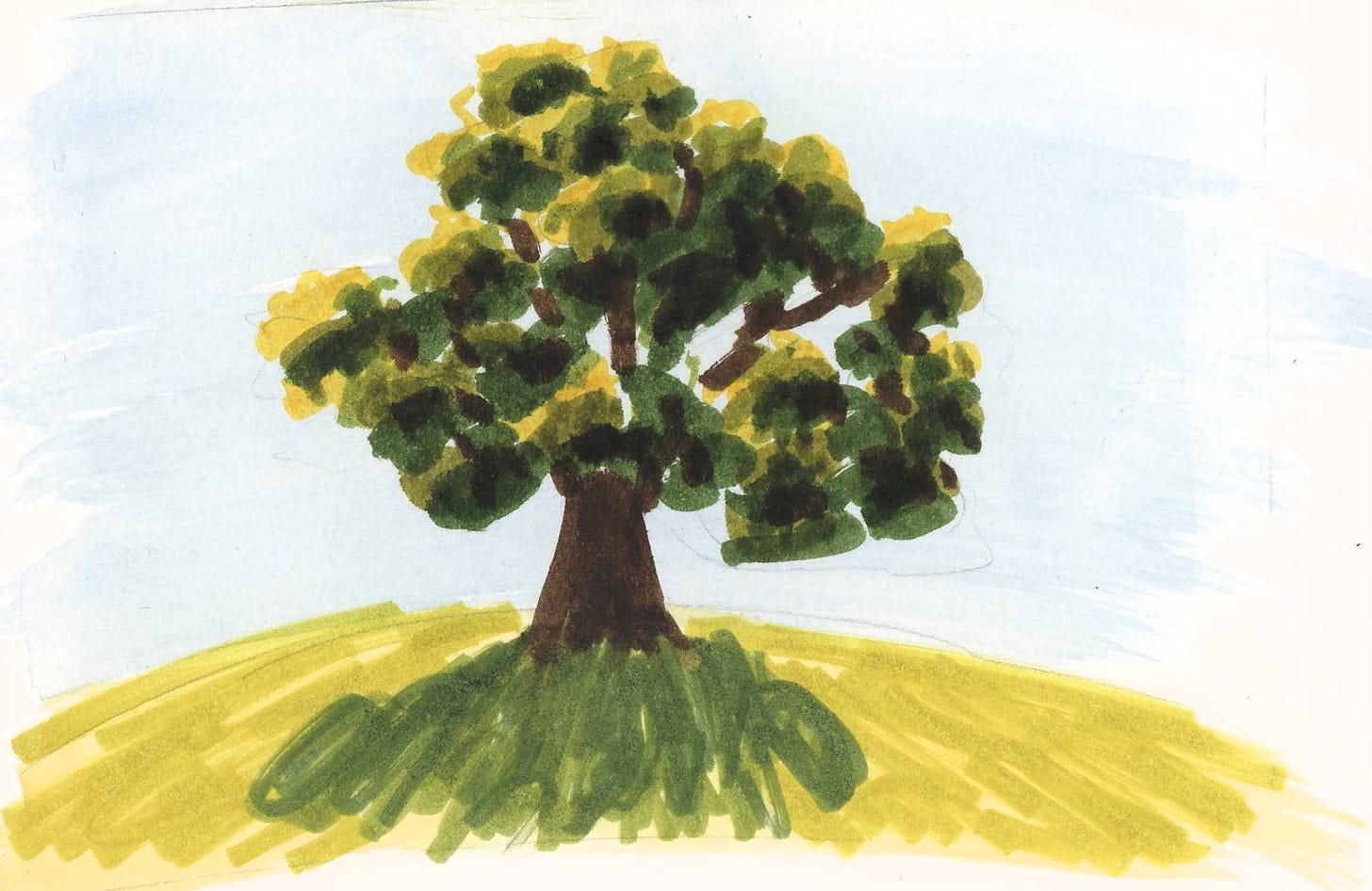
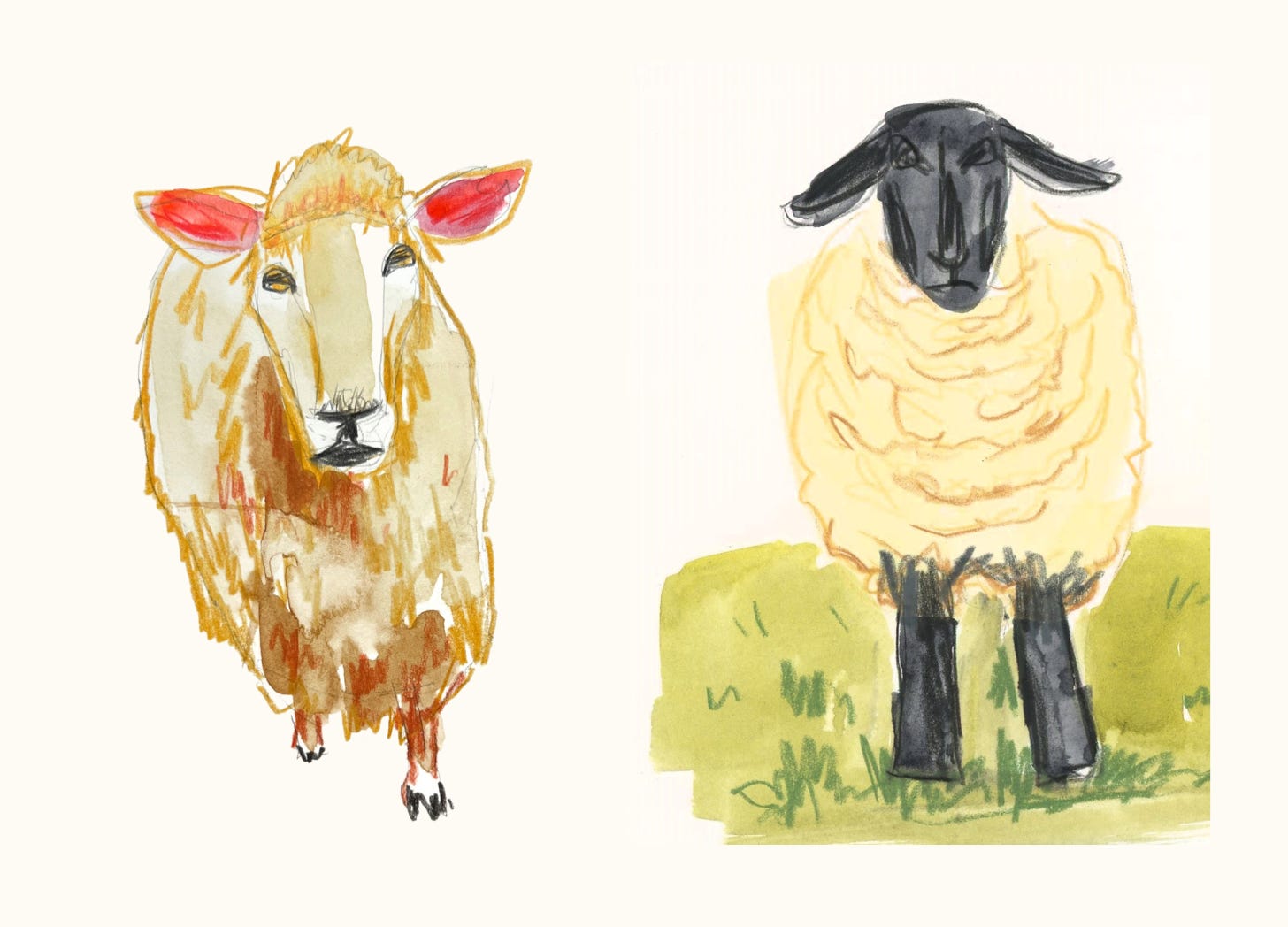

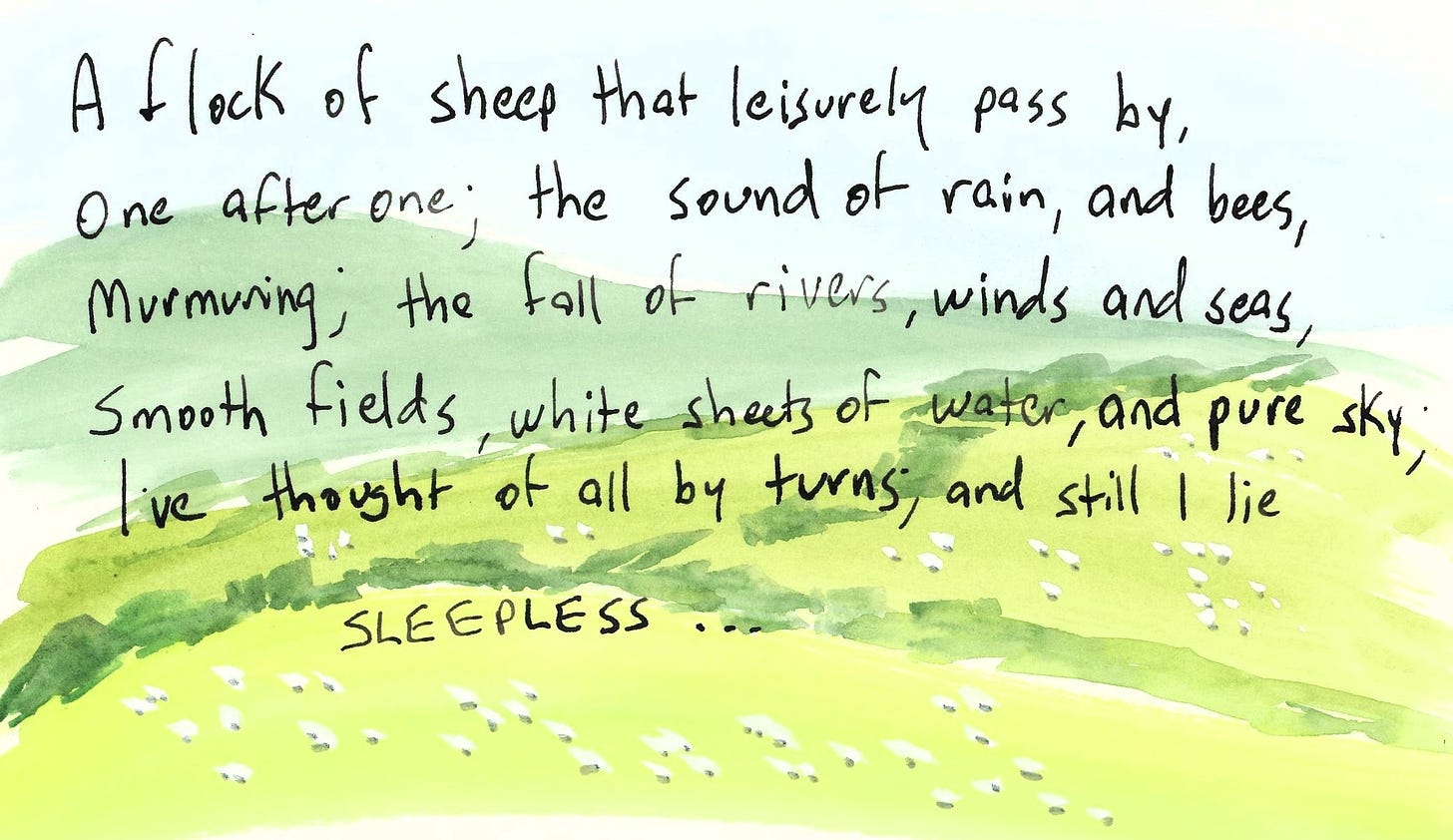
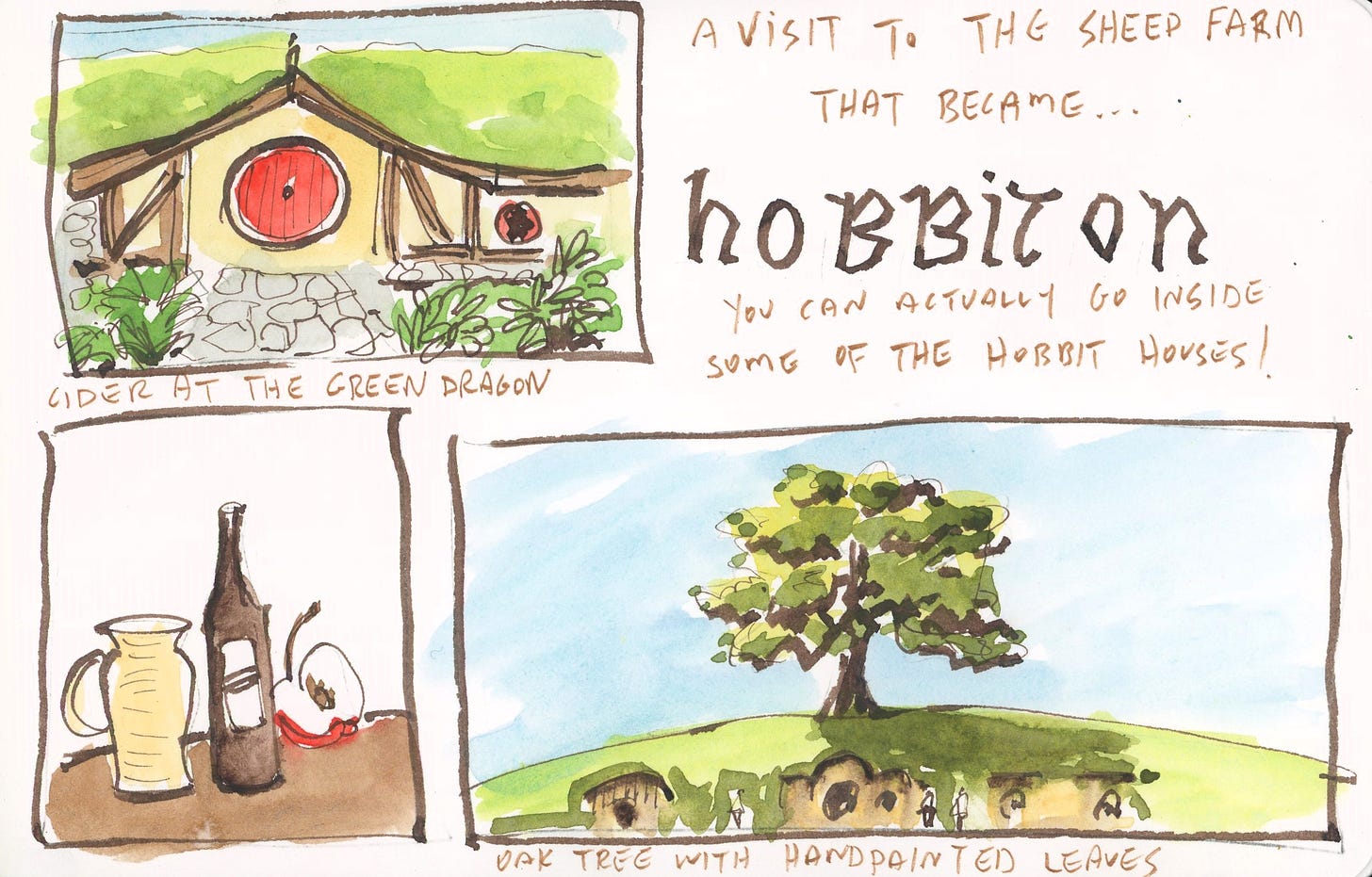
What a fun read! Delightful is actually the perfect word for it (which was used in a previous comment). Both your words and your illustrations made me smile and sometimes laugh out-loud. Thank you.
That was a charming treat so thank you very much. I actually came here to say thank you for pointing me towards "The Trials of Nina McCall" which I just finished and has allowed ME to treat everyone in my orbit to vehement lectures on that travesty of buried history. My next captive listener who responds with appropriate indignant cries for justice will be rewarded with a link to the sheep, so thank you for that as well.